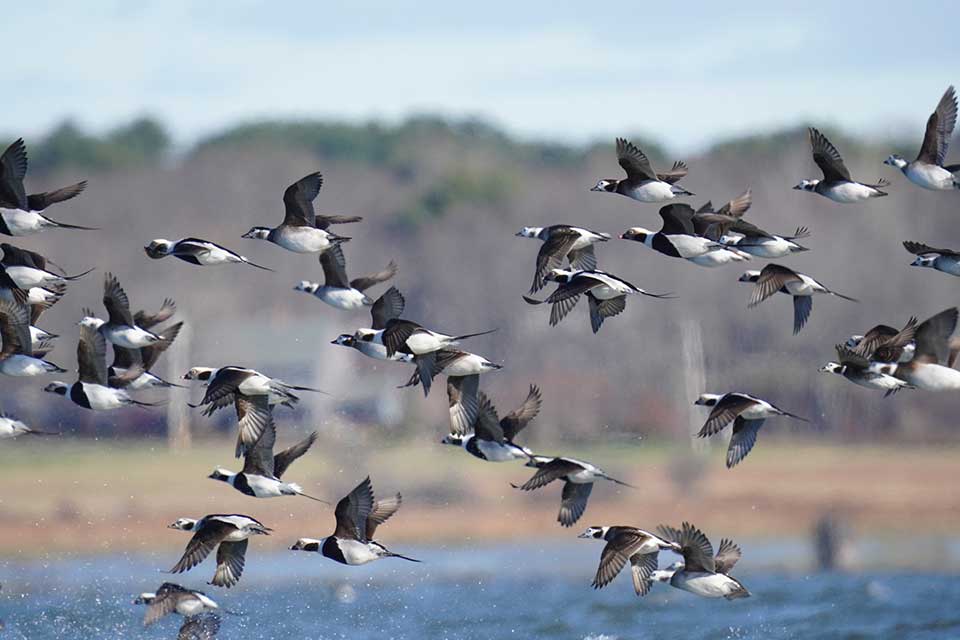Lead Institution(s): University of Saskatchewan
Project Lead: Shona Lawson
Collaborator(s): Ray Alisauskas (CWS), SDJV, CWS, NSTP, PCSP, USask
Focal Species: Long-tailed Duck (Clangula hyemalis), King Eider (Somateria spectabilis)
Project Description: This project involved investigating life history strategies of Long-tailed Ducks and King Eiders on a shared breeding ground in the central Canadian Arctic, where long term research has been conducted on King Eiders and Long-tailed Ducks since 1995 and 1998 respectively. This project began in June 2004, at the Karrak Lake Research Station in the Queen Maud Gulf Bird Sanctuary, Nunavut Canada. The primary objectives of this project were to 1) quantify incubation recess frequencies taken by Long-tailed Ducks and King Eiders, 2) measure and compare mass loss of female Long-tailed Ducks and King Eiders during incubation, 3) measure the allocation of endogenous and exogenous energy reserves in eggs laid by Long-tailed Ducks and King Eiders and 4) determine wintering areas of individual Long-tailed Ducks breeding at Karrak Lake.
SDJV42 Interim Report FY04
SDJV42 Final Report FY05
Related Publications
Lawson, S. 2006. Comparative reproductive strategies between long-tailed ducks and king eiders at Karrak Lake, Nunavut: Use of energy resources during the nesting season. M.Sc. Thesis, University of Saskatchewan. https://harvest.usask.ca/server/api/core/bitstreams/05248018-c688-4642-be93-39c88830fb18/content
